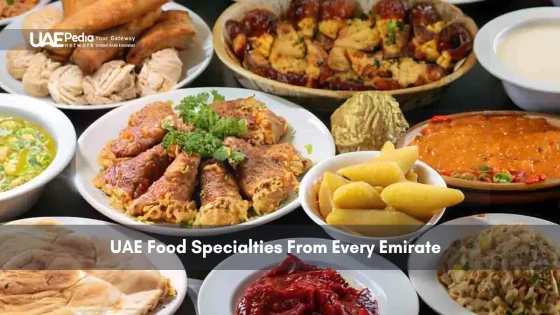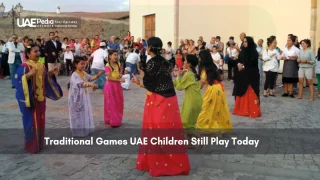What if we told you this desert nation’s culinary scene rivals its skyscrapers in diversity? From spice-scented souks to modern fusion kitchens, the seven emirates serve up flavors as layered as their history. Let’s unpack the edible mosaic that defines this region’s identity.
Every bite here tells a story. Coastal cities like Dubai infuse seafood with saffron and cardamom, while inland oases preserve recipes passed through Bedouin generations. Even culinary traditions like Arabic coffee ceremonies—where bitter gahwa meets sweet dates—reveal how hospitality shapes every meal.
Modern chefs aren’t just preserving heritage—they’re rewriting it. Picture camel milk cheesecakes in Abu Dhabi or deconstructed luqaimat (fried dough balls) served with liquid gold honey foam. Street vendors keep it real with shawarma wrapped in freshly baked khameer bread, proving innovation and tradition coexist deliciously.
Regional specialties surprise even seasoned travelers. Sharjah’s harees (wheat-and-meat porridge) comforts like a hug, while Fujairah’s machboos spices rice with dried lemon. During celebrations, families gather around dishes like slow-cooked lamb majboos, where recipes become heirlooms.
- Discover how each emirate’s geography shapes its signature dishes
- Explore modern twists on centuries-old recipes
- Learn the cultural stories behind saffron-infused desserts and spice blends
Exploring the Rich Culinary Heritage of the United Arab Emirates
Ever wonder how a single bite can taste like centuries of history? Emirati cuisine weaves together Bedouin resilience, coastal trade routes, and the warmth of shared meals. Take gahwa—Arabic coffee isn’t just a drink here. It’s a ritual where roasted beans, cardamom, and saffron simmer in a dallah pot, served with dates to balance bitter and sweet.
Family feasts reveal the heart of this culture. Dishes like harees (slow-cooked wheat and meat) or machboos (spiced rice with dried lemon) turn dinner tables into time machines. “Food is how we honor guests,” locals say—a philosophy baked into every recipe. Even in Abu Dhabi’s sleek restaurants, chefs knead tradition into modern plates, like camel milk desserts dusted with cinnamon.
Regional differences add flavor layers. Coastal towns lean on fresh catch seasoned with turmeric, while desert communities perfect preserved meats and breads. But whether you’re sipping ginger tea in a Sharjah souk or tasting deconstructed baklava downtown, one truth remains: every dish carries stories older than the dunes.
Cultural Traditions Behind Authentic Emirati Cuisine
Imagine being welcomed into a home where every sip and bite whispers centuries of tradition. Emirati hospitality transforms simple ingredients into sacred rituals—proof that culture lives not just in monuments, but in steam rising from a coffee pot.
Arab Coffee Rituals and Hospitality
Preparing gahwa is like choreographing a dance. Green coffee beans roast until fragrant, then boil three times with cardamom and saffron. “A host’s honor rests in their coffee pot,” locals say—served youngest to eldest in handleless cups to symbolize unity.
This isn’t Starbucks-on-the-go. The dallah pot’s curved spout pours deliberately, accompanied by dates to soften the brew’s bitterness. Miss the serving order? You’ve missed the point—it’s about respect, not caffeine.
Sweet Traditions: Baklava and Ginger Tea
Baklava here tells a tasty tale of trade routes. Paper-thin filo (Ottoman), pistachios (Persian), and rose syrup (local) layer into crunch-worthy diamonds. Served alongside khabees (date balls), these sweets turn gatherings into edible history lessons.
Ginger tea plays cleanup crew. Fresh root simmers with saffron strands, aiding digestion after spice-heavy rice dishes. One sip and you’ll understand why it’s the go-to closer for everything from business meetings to wedding feasts.
Modern cafes now riff on these classics—think cardamom cold brews or baklava cheesecake. But the soul remains: recipes crafted not just for flavor, but for connection. As one chef told us, “Tradition isn’t preserved in museums—it’s served daily, steaming hot.”
A Closer Look at UAE Food: Heritage Meets Modern Innovation
Chefs across the Emirates are rewriting recipe books—not erasing them. Think of it as culinary time travel: age-old spices meet sous-vide techniques, while grandmothers’ stews get plated like abstract art. This fusion creates meals that honor tradition while courting Instagram feeds.
Traditional Dishes Reimagined
Take mansaf, the iconic lamb-and-rice feast. Modern kitchens swap rice for quinoa crusted with local spices, serving it alongside mint-infused yogurt foam. At trendy Dubai eateries, mezze boards transform into edible landscapes—smoky eggplant mutabal piped into date-shaped parcels, accompanied by microgreen salads bursting with za’atar.
Contemporary Culinary Twists
Seasonal produce drives innovation. Chefs pickle watermelon rinds for tangy salad toppings or freeze-dress pomegranate seeds into jewel-like crumbles. One Abu Dhabi hotspot even crafts “spice clouds” using saffron vapor to perfume slow-cooked lamb shanks—a nod to Bedouin cooking methods with molecular flair.
Diners now expect surprises: rosewater-marinated halloumi skewers drizzled with truffle honey, or deconstructed luqaimat dough balls resting on edible gold leaf. As one chef told us, “We’re not changing the soul of the cuisine—just giving it new shoes to walk in.” Ready to taste this delicious evolution?
Regional Flavors: Dishes from Every Emirate
Ready to map flavors across seven distinct territories? Geography writes the menu here—coastal cities layer citrusy tang into seafood stews, while desert towns simmer spices into slow-cooked meats. Fujairah’s fishermen toss madrooba (salted fish) with dried lemon, while Abu Dhabi’s chefs stir saffron threads into buttery rice—each dish a compass pointing to its origin.
Spice blends act as regional fingerprints. Dubai’s baharat mixes cinnamon and cumin for shawarma rubs, while Sharjah’s loomi (black lime) adds smoky depth to lentil soups. Travelers hunting authenticity should follow their noses to Ras Al Khaimah’s date markets, where vendors grind cardamom for khameer bread fillings.
Preparation styles shift with the dunes. In Ajman, street chefs marinate chicken in turmeric overnight for charcoal-grilled perfection. Umm Al Quwain’s home cooks stuff samak mashwi (grilled fish) with mint and preserved lemon—a bright contrast to the Gulf’s salty breeze. “Our recipes are maps,” says a local chef. “Taste the coastline in one bite, the desert in another.”
For unforgettable food travel moments:
- Snack on saffron-dusted chebab pancakes at Dubai Creek dawn
- Join a spice-blending workshop in Al Ain’s oases
- Swap stories over lemon-infused karak chai at Abu Dhabi’s truck stops
Pro tip: Markets like Sharjah’s Blue Souk hide spice stalls where vendors craft custom blends. Ask for za’atar with extra sumac or saffron strands bundled in rose petals—your taste buds will send postcards.
Signature Emirati Dishes: Mansaf, Kebbe Nayeh, and Legemat
What transforms a meal into a cultural heirloom? Three iconic dishes answer that question through layers of spice, technique, and shared joy. Each bite carries generations of wisdom—and a few modern tweaks.
Mansaf – The Festive Lamb Feast
Picture a platter where tender lamb shanks swim in jameed—a tangy yogurt sauce thickened for days. Chefs layer saffron-kissed rice beneath, then crown it with toasted almonds. This isn’t dinner—it’s theater. Families gather around Mansaf during weddings, using right hands to scoop meat and sauce into fluffy bread pockets.
Preparation takes patience. The yogurt ferments into rich umami, while lamb slow-cooks until it surrenders to forks. “Mansaf teaches us to savor time,” says a Dubai-born chef. “Every simmered hour honors our ancestors.”
Kebbe Nayeh Ritual and Its Unique Preparation
Raw beef gets a glow-up here. Prime cuts marinate with bulgur, mint, and chili paste until silky smooth. Served cold on ice-chilled platters, it’s topped with olive oil swirls and fresh pomegranate seeds. Trust us—it’s safer (and tastier) than it sounds.
This dish demands trust. Butchers select specific cuts, while home cooks grind meat twice for velvet texture. Paired with flatbread and pickled vegetables, it’s a textural adventure that’s survived centuries.
Don’t overlook Legemat’s magic. These golden dough balls achieve crisp exteriors with cloud-soft centers. Drizzled with date syrup and sesame seeds, they balance honeyed sweetness against cardamom’s warmth. Street vendors fry them fresh during Ramadan—each bite a sticky celebration.
Side dishes whisper clever contrasts. Tomato salads brightened with sumac cut through Mansaf’s richness. Mint-karak tea—steeped with condensed milk—offers creamy closure. Together, these flavors showcase a culinary world where tradition dances with innovation, proving why Emirati cuisine earns global applause.
Traditional Appetizers: Mezze, Mutabal, and Tabbouleh
Ever felt your taste buds throw a confetti party? That’s mezze—a kaleidoscope of small plates turning appetizers into edible theater. These starters aren’t just preludes to meals but vibrant conversations between textures and traditions.
The Art of Mezze Presentation
Chefs arrange mezze like jewelers setting gems. Vibrant tabbouleh nests beside glossy mutabal, while pickled vegetables add pops of color. “Mezze isn’t just eaten—it’s experienced,” as one Dubai chef told us. Restaurants often serve these spreads on brass trays, where parsley confetti dances over lemony hummus.
Exploring the Rich Texture of Mutabal
Mutabal—the smoky cousin of baba ghanoush—whispers tales of campfire cooking. Charred eggplant melts into tahini and garlic, crowned with pomegranate seeds that burst like flavor fireworks. Locals pair it with warm khubz bread, creating a creamy-crunchy duet perfected over generations.
Tabbouleh plays the refreshing counterpart. Bulgur wheat tangles with mint and parsley, kissed by lemon—a bright contrast to richer dishes. Coffee rituals often follow, where bitter arabica balances these lively flavors. Smart diners order mezze combos to tour the country’s culinary map in one sitting.
Why settle for chips and dip? Next time you’re in local restaurants, let mezze plates become your passport. Each bite-sized dish reveals how this nation turns simple ingredients into edible artistry—one smoky, crunchy, or herb-flecked masterpiece at a time.
Street Eats: Shawarma, Falafel, and More
Follow the scent of sizzling garlic and charred meat through bustling alleyways—you’ve entered the realm of Emirati street eats. Day or night, these quick bites deliver bold flavors faster than taxis zip down Sheikh Zayed Road. From office workers grabbing lunch to night owls craving post-club fuel, everyone bows to the allure of handheld perfection.
Authentic Flavors on the Go
Shawarma reigns supreme here. Juicy chicken or beef, marinated in turmeric and garlic, spins on vertical grills until caramelized. Vendors shave it into warm khameer bread, then layer pickles, garlic sauce, and fries—because why not? “The secret’s in the sauce,” whispers a Dubai vendor, swirling tahini and chili paste like Jackson Pollock with a squeeze bottle.
Vegetarians flock to falafel stands for golden-brown chickpea fritters. Crunchy outside, herb-flecked inside, these get tucked into pillowy pita with hummus and mint salad. One bite explains why this humble snack tops best food lists across the region.
In Abu Dhabi, food trucks elevate street fare with truffle-infused mayo on fries or za’atar-dusted avocado wraps. But classics still dominate—look for carts where locals queue. Pro tip: Hit Al Rigga Street in Deira at sunset. Follow the laughter to unmarked spots serving luqaimat alongside karak chai, where every sweet-and-savory combo feels like a high-five for your taste buds.
Savory and Sweet Desserts: Luqaimat, Mahalabiya, and Knafeh
Dessert here isn’t an afterthought—it’s where spices sing and textures tango. Middle Eastern sweets balance crunch and cream like edible symphonies, turning every meal’s finale into a standing ovation for your taste buds.
Crunchy Delights and Creamy Treats
Meet luqaimat—golden dough balls that crackle like desert campfires. Their crisp shells give way to cloud-soft centers, drenched in date syrup and sesame seeds. Locals whisper, “The best ones leave honey dripping down your wrist.” Ramadan nights glow brighter with these sticky treasures.
Mahalabiya whispers elegance. This milk pudding swirls rose water into velvety layers, topped with pistachio confetti. Served chilled in Abu Dhabi cafes, it’s a cooling counterpoint to spice-rich traditional dishes. Generations have perfected its silken texture—one delicate spoonful transports you to breezy courtyard gatherings.
Then there’s knafeh—the cheese pastry that defies gravity. Shredded phyllo nests around gooey akkawi cheese, soaked in orange-blossom syrup. Dubai street vendors layer it fresh off the griddle, creating a sweet-salty crunch that’s earned cult status. Pro tip: Eat it warm, when the cheese pulls like molten gold.
These creations aren’t just sweets—they’re edible heirlooms. Each bite honors centuries of trade routes and family recipes. After savoring smoky meats and zesty mezze, let these Middle Eastern marvels write your meal’s perfect ending.
Infusing Spices: Saffron, Mint, and Signature Seasonings
Unlock any Emirati kitchen’s secret weapon—spice racks brimming with golden saffron, fresh mint, and custom blends whispering family legacies. These aromatic powerhouses transform simple ingredients into emirati dishes that dance between earthy warmth and citrusy brightness.
Spice Blends That Define the Region
Saffron threads steeped in rosewater elevate everything from lamb machboos to cardamom-scented desserts. “One pinch colors a whole pot,” chefs say—their rice glowing like desert sunsets. Mint cuts through richness, tossed into zesty salads or blended into yogurt sauces for grilled meats.
Olive oil anchors these flavors. Locals whisk it with sumac for tangy marinades or drizzle it over warm bread dipped in za’atar. In coastal towns, lemon-infused oil becomes a seafood glaze, while date groves inspire dressings with cinnamon undertones.
The same spice wisdom fuels arabic coffee rituals. Roasted cardamom pods mingle with cloves in gahwa, creating a fragrant bridge between meals and hospitality. Home cooks often reuse coffee spices in stews—waste not, want not.
Why not play alchemist? Mix saffron with orange zest for roasted veggies, or crush dried limes into meat rubs. As one Abu Dhabi spice vendor advises, “Start with small batches—flavors grow bolder when shared.” Your kitchen might just become the next flavor frontier.
Iconic Beverages: Arabic Coffee, Ginger Tea, Karak, and More
Ever wondered how a simple drink can embody centuries of tradition? In this region, beverages aren’t just thirst-quenchers—they’re liquid invitations to slow down and savor. From ceremonial pours to roadside sips, every cup tells a story steeped in spice and hospitality.
Traditional Brewing Methods
Arabic coffee starts with green beans roasted over coals until fragrant. Cardamom pods and saffron threads join the grind, simmered in a dallah pot for hours. “The first sip honors the guest,” vendors explain—served in petite cups without handles to encourage mindful sipping.
Ginger tea follows its own rhythm. Fresh root shavings boil with loose-leaf black tea, sweetened with sugar and a pinch of saffron. Street stalls brew it in giant pots, filling paper cups for 5 AED—a warming bargain during winter nights.
Refreshing Flavors to Savor
Karak tea dominates car windows at dusk. Strong black tea blends with evaporated milk and cardamom, boiled twice for velvety richness. At 3 AED per cup, it’s the fuel behind late-night drives and sunrise commutes.
Balance defines these drinks. Bitter coffee meets date syrup’s sweetness. Spicy ginger tangoes with saffron’s floral notes. Even water here gets a twist—often served with rose or mint for a refreshing pause between meals.
Don’t miss the chance to chat with vendors. Many guard family recipes tighter than bank vaults. As one tea master grinned, “My karak could make camels smile.” Ready to test that claim?
International Influences in the UAE’s Culinary Scene
Where else can you taste the world in a single bite? The region’s dining tables have become global flavor hubs, blending traditions from India’s spice bazaars to Lebanon’s mountain villages. Over 200 nationalities call this place home—and their recipes came along for the ride.
Indian biryani gets a local twist here with saffron-kissed rice and slow-cooked mutton shanks. Persian chefs fold pomegranate molasses into date-glazed kebabs, while Lebanese mezze boards gain Emirati staples like khameer bread for scooping hummus. Even holiday traditions spark fusion—think cardamom-spiced gingerbread during festive seasons.
Top restaurants lead the charge. Dubai’s fine-dining spots reinvent cheese-stuffed paratha as bite-sized canapés, drizzled with truffle oil. Casual eateries riff on classics too—Abu Dhabi food trucks stuff akkawi cheese into tacos with za’atar salsa. “We’re not erasing borders,” says a Sharjah chef. “We’re building flavor bridges.”
Mutton dishes showcase this blend beautifully. Persian pomegranate-glazed cuts share menus with local stews simmered in dried limes. Cheese lovers find surprises everywhere, from halloumi cheesecake to labneh ice cream garnished with rose petals.
Ready to explore? Follow the scent of freshly baked manakish near spice souks or book tables at top-rated eateries pushing boundaries. Every meal here proves that culinary innovation thrives when cultures collide—and collaborate.
Culinary Destinations: Top Restaurants from Dubai to Abu Dhabi
Forget Michelin stars—the real magic happens where saffron meets street corners. From Dubai’s neon-lit avenues to Abu Dhabi’s heritage districts, every meal becomes a compass pointing to local flavor. Let’s chart your next delicious detour.
Hidden Gems and Street Food Favorites
Follow the garlic-scented smoke to Deira’s unmarked alley carts. One legendary vendor layers shawarma with caramelized onions and house-pickled tomatoes, wrapped in freshly baked khameer. “Our secret? Vegetables stay local—no refrigerated trucks,” the cook winks, drizzling garlic sauce like edible confetti.
In Abu Dhabi, hunt butter-glazed regag flatbreads near Al Mina Port. Crispy edges cradle runny eggs and chili paste—breakfast perfection for 10 AED. Budget tip: Busiest stalls often have the freshest ingredients. Listen for sizzling pans and crowds chatting in Arabic.
Popular Eateries and Signature Plates
Al Fanar Restaurant & Café transports diners to 1960s Emirati villages. Their samak mashwi stars Gulf shrimp marinated in tomato-lime sauce, served with onion-sumac salad. Pro move: Order the gold-foil biryani, where basmati rice shimmers under saffron-kissed butter.
Dubai’s Arabian Tea House reimagines classics. Try their deconstructed thareed—slow-cooked lamb atop crispy flatbread, drenched in garlic-tomato broth. Vegetarians rave about the roasted vegetable platter, featuring charred eggplant and caramelized onions drizzled with date molasses.
Whether you’re splurging on waterfront tasting menus or grabbing 5 AED falafel wraps, remember this: The best meals here aren’t eaten—they’re discovered. Ready to let your taste buds navigate?
Celebrating the Diversity of United Arab Emirates Food
Picture a spice bazaar where every jar holds a story—that’s the Emirates’ culinary landscape. From sun-baked coastlines to air-conditioned malls, meals connect generations and cultures. Salt plays its quiet role here, preserving fish in Fujairah’s madrooba and balancing sweetness in date desserts.
Regional specialties reveal ingenious flavor layering. Coastal chefs use sea salt to crust grilled hamour, while desert recipes rely on brined meats for depth. Modern kitchens experiment too—think salted caramel luqaimat or za’atar-dusted popcorn served in Dubai’s trendiest cafes.
| Dish | Region | Salt’s Role |
|---|---|---|
| Madrooba | Fujairah | Preserves fish, enhances umami |
| Harees | Sharjah | Balances wheat-meat porridge |
| Camel sliders | Abu Dhabi | Sea salt crust on brioche buns |
This culinary mosaic thrives on shared tables. Families gather around saffron rice dotted with raisins, while food trucks fuse Korean gochujang with local spices. “Our recipes are living conversations,” says a Sharjah chef. “Salt seasons memories as much as meals.”
Every bite honors collaboration. Indian spices meet Omani limes in stews. Lebanese breads cradle Emirati cheeses. Through it all, salt remains the quiet conductor—tying ancient preservation methods to tomorrow’s flavor experiments.
Ready to taste this edible unity? Follow the scent of cardamom coffee to a street cart or book that fusion tasting menu. The Emirates’ culinary story isn’t just diverse—it’s deliciously alive.
A Savory Farewell: Savor the Best of UAE Food
Ready to turn every meal into a cultural compass? From first sips of cardamom-laced gahwa to last bites of honey-drenched desserts, this culinary journey reveals how tradition and innovation simmer side by side. Each dish—whether a chickpea-packed falafel or saffron-kissed lamb—carries stories older than the dunes.
Appetizers like smoky mutabal teach patience, while mains like machboos showcase spice alchemy. Modern twists? Think chickpea hummus reimagined as edible art or camel milk desserts that balance heritage with flair. Even street eats like shawarma wrapped in fresh bread prove flavors evolve without losing their roots.
Your turn. Taste sunrise at Dubai’s spice markets with za’atar-dusted chickpea pancakes. Share stories over ginger tea in Abu Dhabi’s hidden cafes. Let crispy luqaimat dough balls remind you that every bite here bridges past and future.
Hungry for more? Bookmark this guide, pack stretchy pants, and return soon. We’ll keep serving fresh insights into regional gems—because the best meals aren’t eaten, they’re discovered. Sahtain! (To your health—and next adventure.)
Start with Machboos—a fragrant rice dish layered with tender lamb or chicken, turmeric, and dried lemon. It’s the unofficial national plate, served at family gatherings and local spots like Al Fanar Restaurant in Dubai.
Absolutely! Try Tabbouleh (herb-packed salad) or Falafel from street vendors like Muslimah Food Truck in Abu Dhabi. Many mezze spreads also feature Mutabal (smoky eggplant dip) and fresh khubz bread.
Emirati gahwa is lightly roasted, infused with cardamom and saffron, and served unsweetened in tiny cups. It’s a symbol of hospitality—always accept a cup when offered in a majlis (traditional seating area).
Hit Al Dhiyafah Road in Dubai for crispy shawarma at Automatic Restaurant, or visit Abu Dhabi’s Al Mina Port for Luqaimat (dumplings drizzled with date syrup) at street stalls during Ramadan.
Yes! Places like Milas in Dubai Marina reinvent classics—think Knafeh cheesecake or camel meat sliders. Even high-end spots like Ossiano blend Gulf flavors with avant-garde techniques.
Saffron, cardamom, and dried limes (loomi) are essentials. Look for them in Harees (slow-cooked wheat and meat porridge) or Balaleet (sweet-savory vermicelli breakfast).
Use your right hand for eating communal dishes, and try a bit of everything offered—it’s polite. At formal meals, wait to be seated; hosts often place honored guests near the platter’s center.
Book a table at Logma in Boxpark for Khameer bread with cheese dip, or head to Al Mrzab Restaurant in Deira for camel meat biryani. Both balance tradition and local buzz.
During Ramadan, don’t miss Harees or Threed (stew over bread). Eid celebrations feature Maq’louba (“upside-down” spiced rice and meat), while National Day menus often include saffron-infused desserts.
Visit Dubai’s Spice Souk for premium saffron or Deira’s dates market. Brands like Barakat sell pre-mixed bzar (local spice blend) at Carrefour for easy souvenir shopping.


















